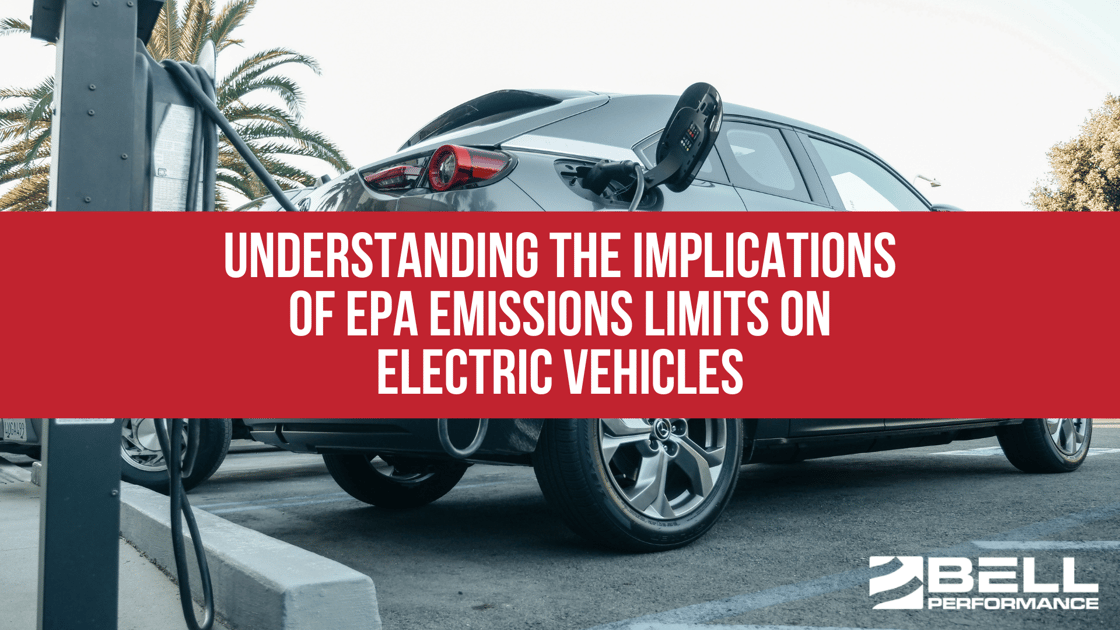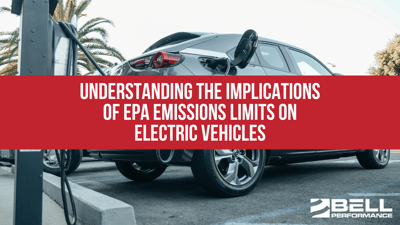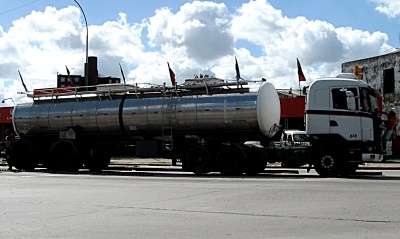Recent Fuel Changes and How They Affect You: Part 2
As a service to our customers, dealers and friends, Bell Performance hosts quarterly webinars on fuel topics of interest to their friends and their...
3 min read
Erik Bjornstad : Jun 8 2023

In recent years, we've seen more attention paid to the topic of electric vehicles (EVs) - their positive environmental impact and the claims of how important they will be for moving our country in the direction of a zero carbon footprint. In response, one common argument against EVs is the claim that their production process contributes to a large carbon footprint. This, the skeptics claim, goes a long way to negating their positive environmental benefits.
 However, a comprehensive analysis by the nonpartisan Fuels Council in 2022 provides valuable insights into the carbon footprint of EVs and their long-term environmental impact. Let's delve into the key findings of the analysis, explore the anticipated effects of implementing coming EPA emissions limits, and maybe even explain the rulemaking process involved in bringing these limits into effect.
However, a comprehensive analysis by the nonpartisan Fuels Council in 2022 provides valuable insights into the carbon footprint of EVs and their long-term environmental impact. Let's delve into the key findings of the analysis, explore the anticipated effects of implementing coming EPA emissions limits, and maybe even explain the rulemaking process involved in bringing these limits into effect.
The common argument surrounding EVs is that their initial carbon footprint is so significant that it takes an exceptionally long time for them to catch up with conventional gasoline-powered vehicles in this respect. However, the analysis conducted by the nonpartisan Fuels Council challenges this notion.
The results of the Fuel Council study reveal that while the carbon footprint of producing an average EV is initially higher than that of a gasoline car (39 tons of carbon dioxide compared to 17 tons), EVs gradually close the gap as they are driven through their lifetimes.
Around the 90,000-mile mark, EVs start to surpass gasoline-powered vehicles in terms of lower carbon emissions. Furthermore, the longevity of EVs, which can last up to 300,000 miles, ensures that their overall carbon footprint remains significantly lower throughout their lifespan.
The Environmental Protection Agency (EPA) plays a crucial role in regulating emissions and protecting the environment. Recently, the EPA proposed a set of wide-ranging emissions limits to reduce harmful vehicle emissions. While these proposed limits aim to mitigate environmental damage, their implementation could have various implications on a variety of levels.
For example, more EVA will mean increased competition among local municipalities to attract manufacturing facilities for EV production. After all, they have to be made somewhere, right? With the anticipated growing demand for EVs, manufacturing sites will be essential for their production. These facilities will generate tax revenue and create job opportunities for local communities. We're likely to see robust competition to attract this kind of production.
Additionally, concerns surrounding rare earth minerals, primarily controlled by China, have been raised as a potential hurdle for EV production. However, it is likely that ongoing efforts are already being made to address this challenge, considering the significance of the issue.
Another crucial aspect to consider is the expansion of the power grid and the need for a larger network of fast-charging stations. With the goal of achieving 60% of new car sales being electric, the power infrastructure must support the charging demands. In fact, this may be the biggest limiting factor to the whole thing. Recent legislation, the Inflation Reduction Act and the Infrastructure Act, have already set aside funding to tackle this challenge. However, the establishment of an extensive charging network, including both urban and rural areas, will require time and substantial investment. Local and state governments will probably need to rethink their permitting processes as well.
The reason we're considering all of this is the passing of the new emissions regulations by the EPA. How this kind of rules are created and implemented by the government is something we all need to understand better. Understanding better the rulemaking process employed by the EPA sheds light for us on how the proposed emissions limits will become enforceable regulations.
The Administrative Procedure Act, the Regulatory Flexibility Act, and other governing legislation - are the governmental backbones that outline the steps involved in this process.
The initial stage, known as the Pre-rule stage, involves the EPA examining different solutions to address an identified problem at hand. A cost-benefit analysis is conducted to evaluate the proposed rule's effectiveness and ensure that its benefits outweigh the associated costs. Once this analysis is complete, the EPA submits an Advanced Notice of Proposed Rulemaking, which is made public to allow for public input.
Following this, the EPA seeks the necessary authority from Congress or the President to proceed with the rulemaking process. By law, they have to have this kind of authorization to do anything like this. Once authorized, the EPA issues a separate Notice of Proposed Rulemaking (distinct from the previous Advanced version), which is subject to a 60-day comment period. During this period, the public can review the proposal, submit comments, and raise concerns or provide additional insights. The EPA takes all of these into account, and maybe they decide to scrap the whole thing and start over. But apart from that, the EPA will then move to a final rule.
Yet, the EPA's proposed emissions limits are not the final step in the process. Following the publication of the final rule in the Federal Register, a 30-day period allows for potential court challenges. And thus the story ends.
The automotive industry is moving towards a cleaner and more sustainable future. With the increasing availability of EVs, expanding charging infrastructure, and ongoing efforts to address environmental concerns, the transportation sector is taking crucial steps toward reducing its carbon footprint and mitigating the impacts of climate change.
The proposed EPA emissions limits will have far-reaching implications for the automotive industry and the environment. By understanding the rulemaking process, the carbon footprint of electric vehicles, the need for expanded charging infrastructure, and the challenges that lie ahead, we can embrace the opportunities presented by a transition to clean transportation.

As a service to our customers, dealers and friends, Bell Performance hosts quarterly webinars on fuel topics of interest to their friends and their...
There's a lot to unpack when we consider what's really to blame for stored fuel contamination. Almost every major industry and sector relies on...
One universal truism is that people like to do business with experts. They like to do business with people they like, and they like to do business...